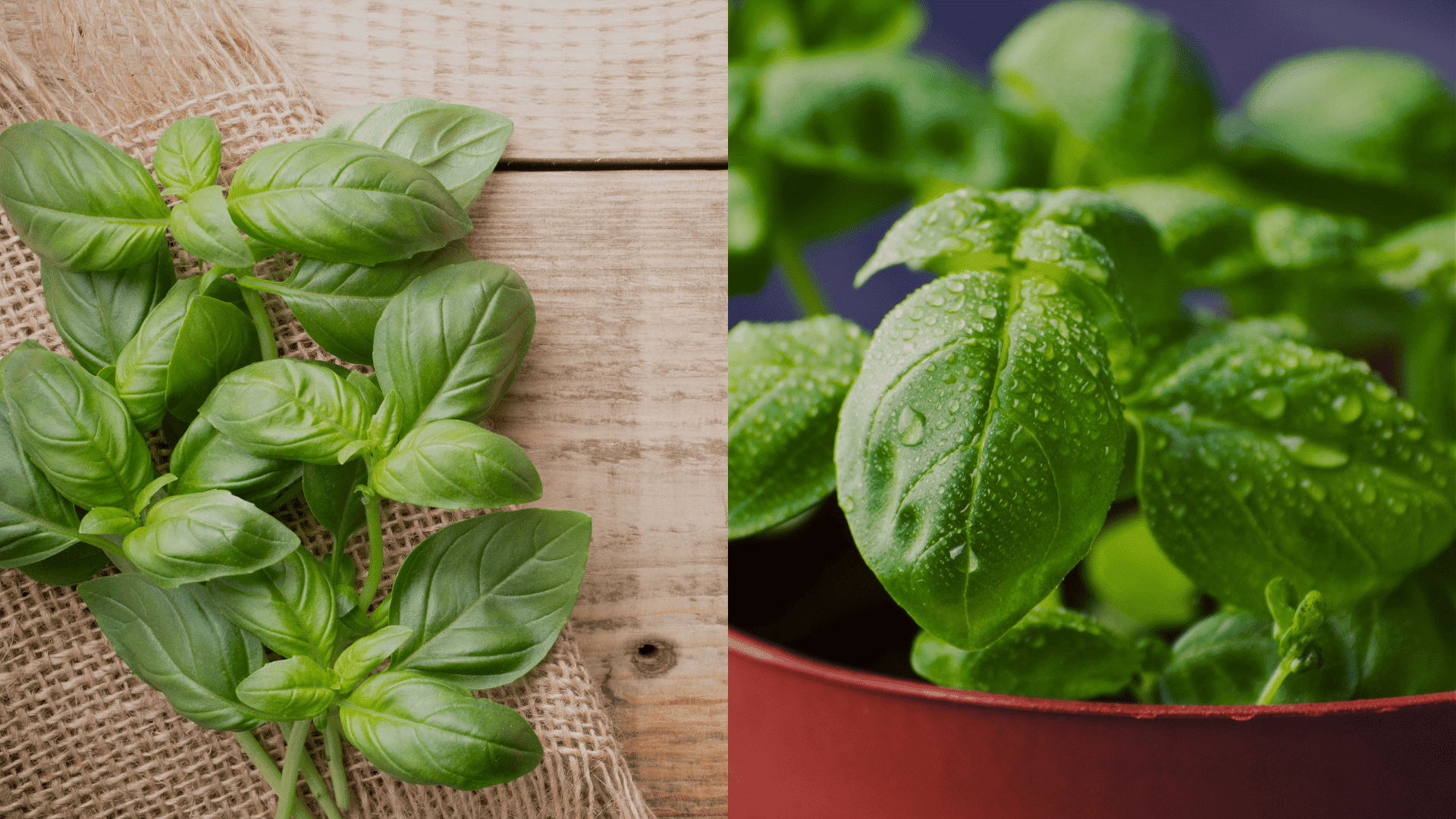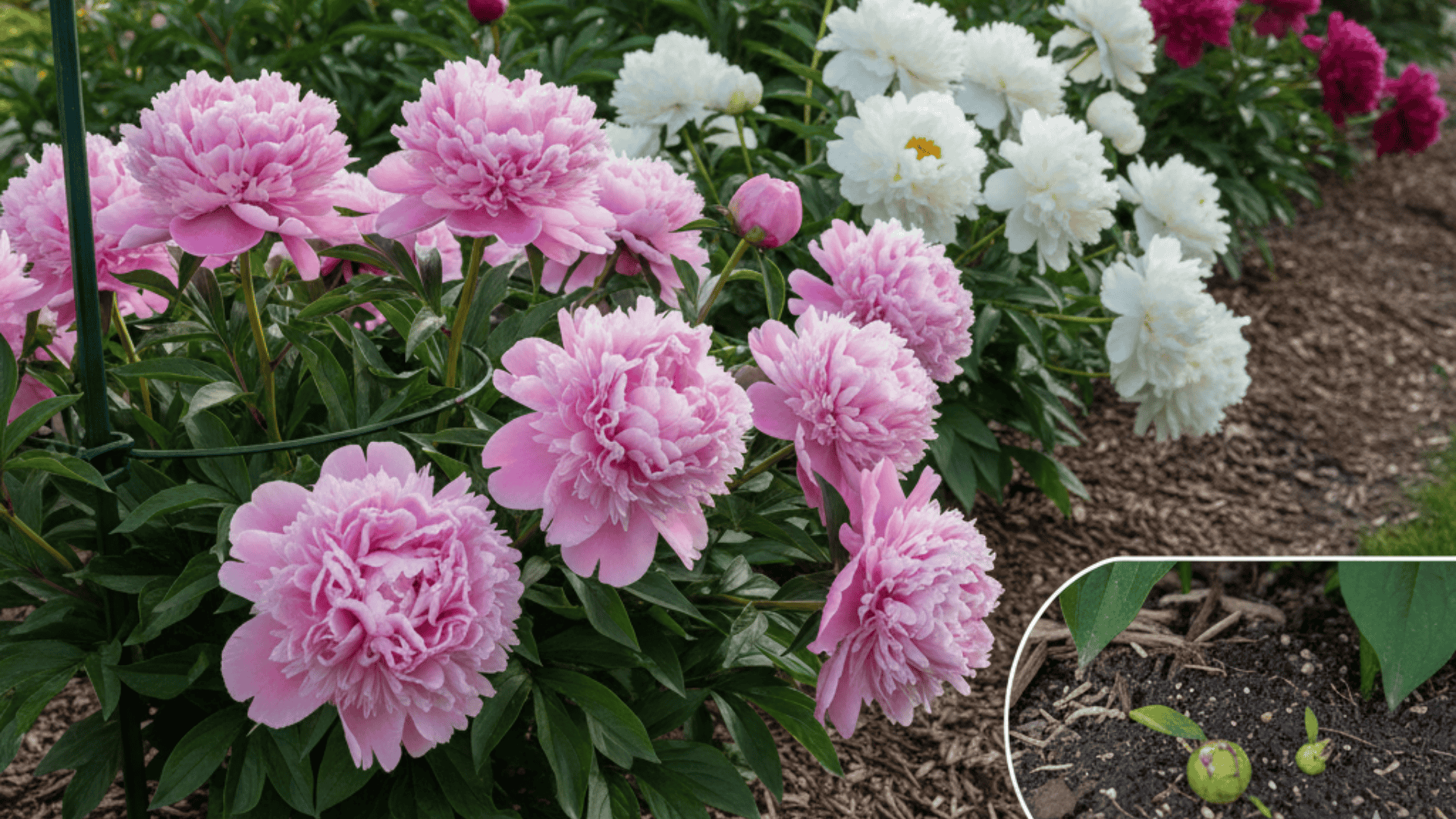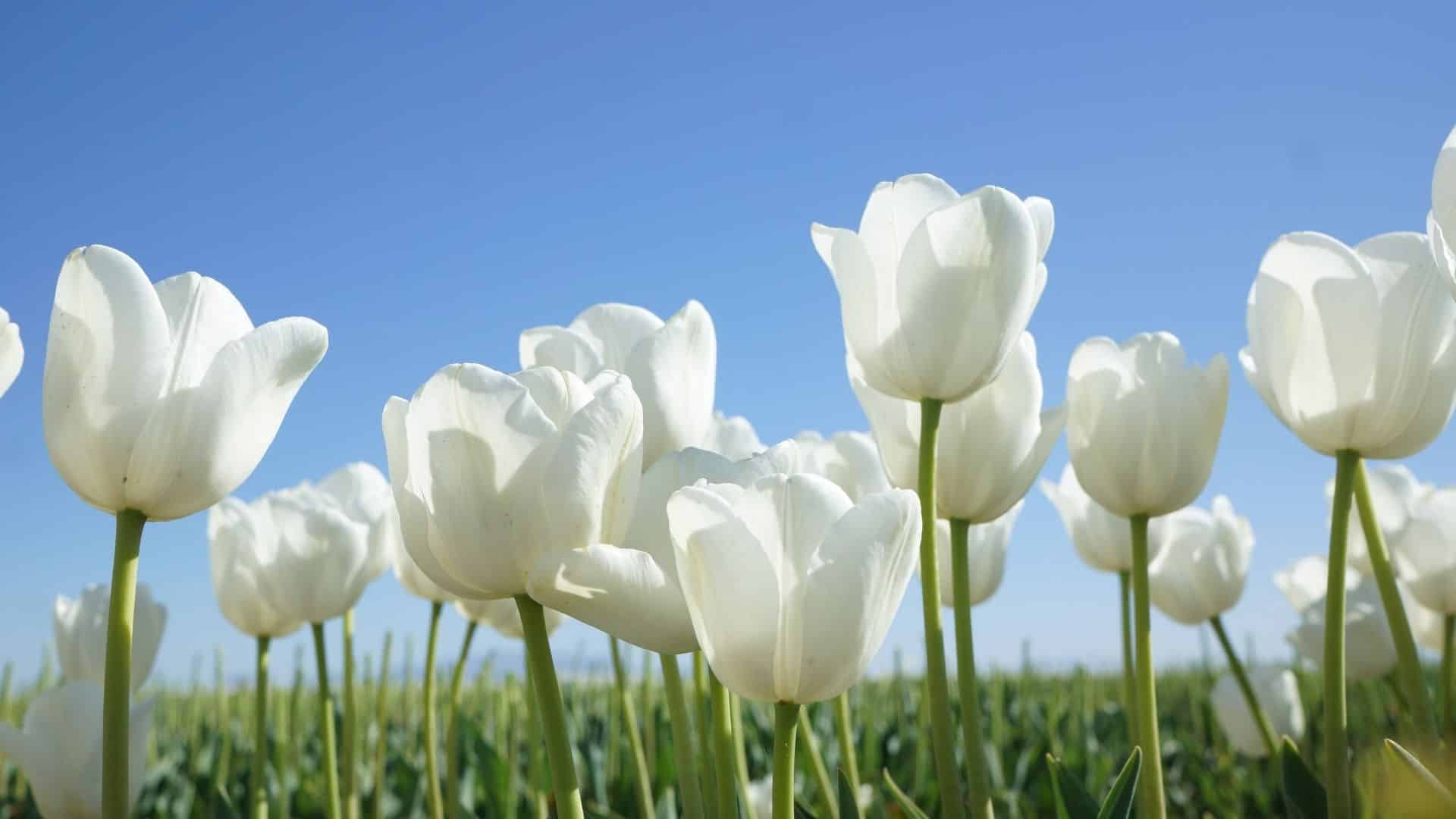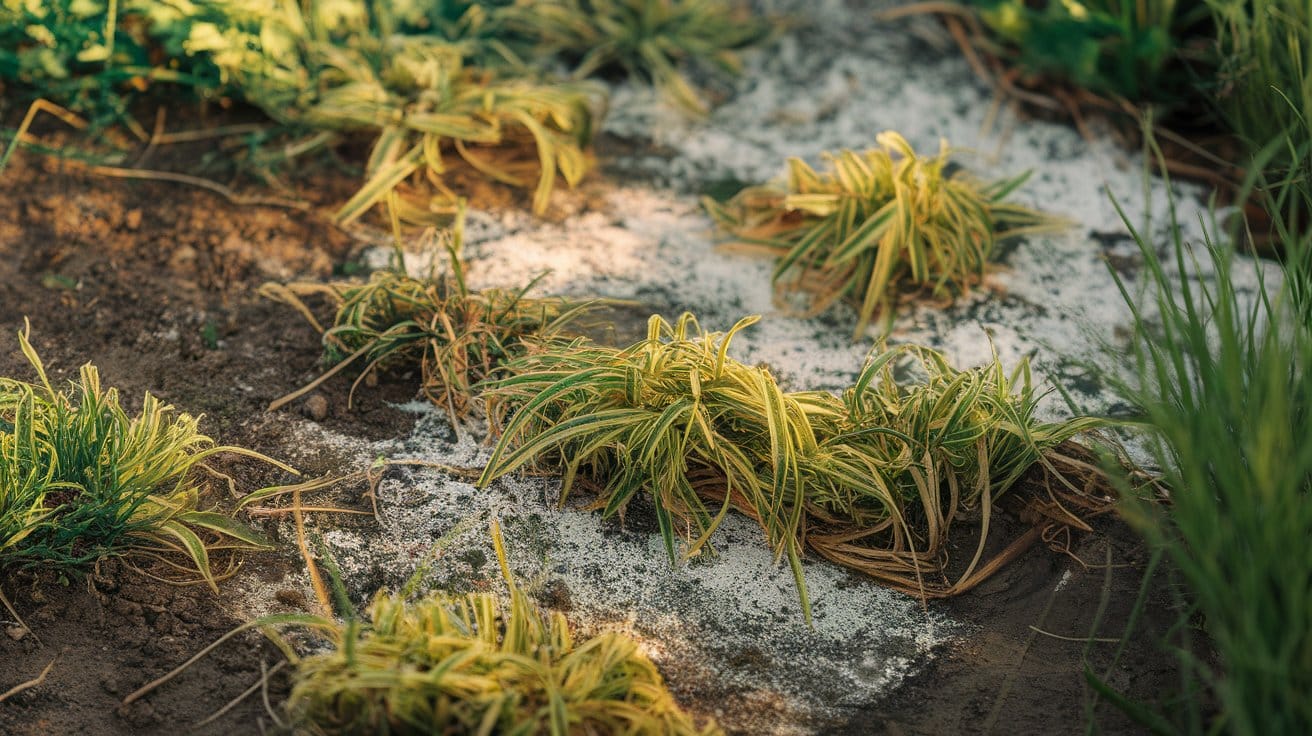Growing garlic at home can be one of the most satisfying things you do in your garden, and it doesn’t need much attention either.
The results are worth it, but there’s one question that trips up many gardeners: how deep to plant garlic cloves?
Getting the depth right makes a real difference in how well your garlic grows.
This post will cover how deep to plant garlic. Why it matters, the best timing, and factors that affect your choices.
You’ll also get a simple planting method, common mistakes to avoid, and tips for care after planting.
Why Planting Garlic at the Right Depth Matters?
The depth you choose affects everything, from root strength to shoot emergence and bulb size.
When you plant too shallow, you’ll run into problems like frost damage, faster soil drying, and freeze-thaw cycles that push cloves out of the ground, leaving them exposed and vulnerable.
Plant too deeply and different issues appear, as shoots take longer to emerge, growth becomes weaker, and the plant wastes energy trying to reach the surface.
The right depth creates balance, allowing roots to develop fully, shoots to emerge on time, and bulbs to form properly.
You get healthier plants and more reliable harvests.
How Deep to Plant Garlic?
The practical answer is 2 to 3 inches deep, and this range works well for most gardeners in most situations.
Your specific location might call for small adjustments.
| Climate Type | Recommended Depth | Why This Depth? |
|---|---|---|
| Cold regions (harsh winters) | 3 to 4 inches | Extra depth protects cloves from severe freezing. |
| Warm regions (mild winters) | 2 inches | Cloves don’t need as much protection from the cold. |
| General guideline (all types) | 2 to 3 inches | Works for both softneck and hardneck garlic. |
Use your finger or a small ruler to check the hole depth before planting, measuring from the soil surface to the bottom of the hole.
How to Plant Garlic?
The process is simple and takes just a few steps, but getting each one right makes all the difference in your harvest.
1. Choose Healthy Cloves
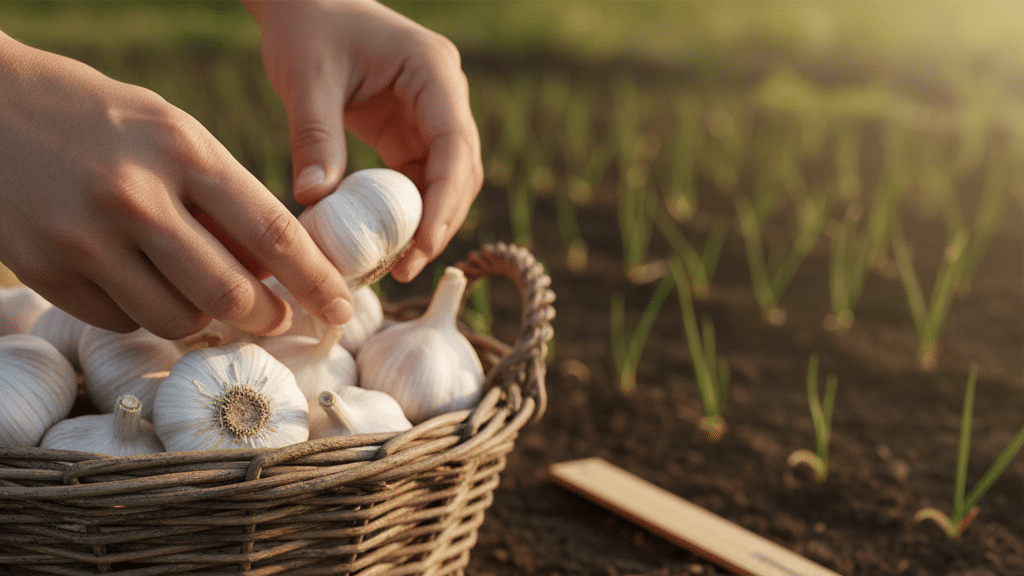
Start with quality seed garlic, and don’t use bulbs from the grocery store, as they’re often treated to prevent sprouting and may carry diseases.
Pick the largest, healthiest cloves from your seed garlic, since bigger cloves have more stored energy and produce bigger bulbs at harvest time.
Look for cloves that are firm and free from soft spots or damage.
2. Prepare the Soil
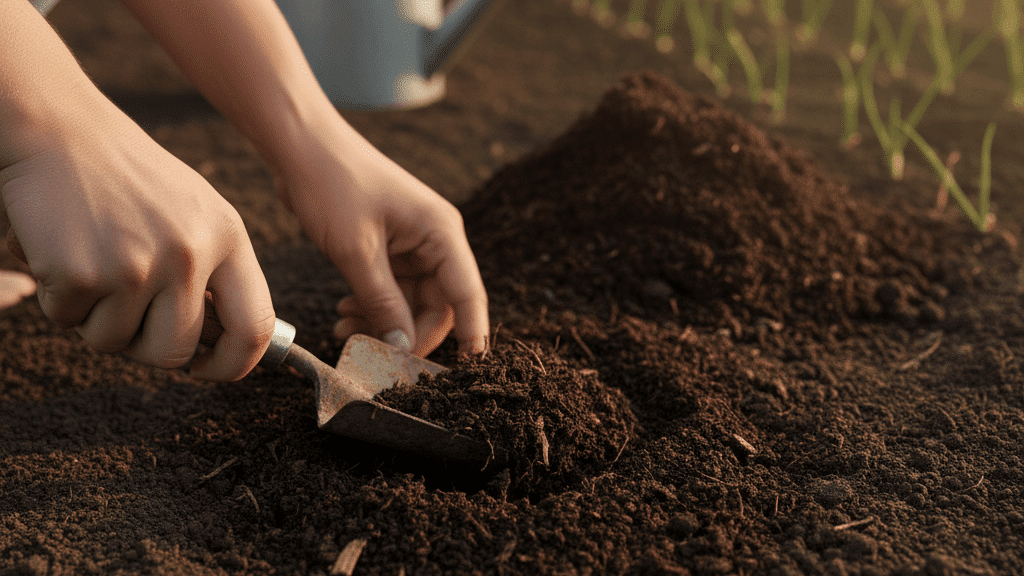
Add compost to boost nutrients by mixing 2 to 3 inches of compost into your planting area, as garlic needs good nutrition to form large bulbs.
Keep the soil loose and workable by breaking up any clumps and removing rocks, since loose soil lets roots spread easily.
3. Plant the Cloves

Position each clove with the pointed end facing up, as the flat end goes down, because this is where roots will emerge.
Plant at the right depth by using your finger to make a hole of the proper depth, dropping the clove in, and covering with soil.
Space cloves properly for good growth by leaving 4 to 6 inches between individual cloves and spacing rows 12 to 18 inches apart, which prevents crowding.
4. Water and Mulch
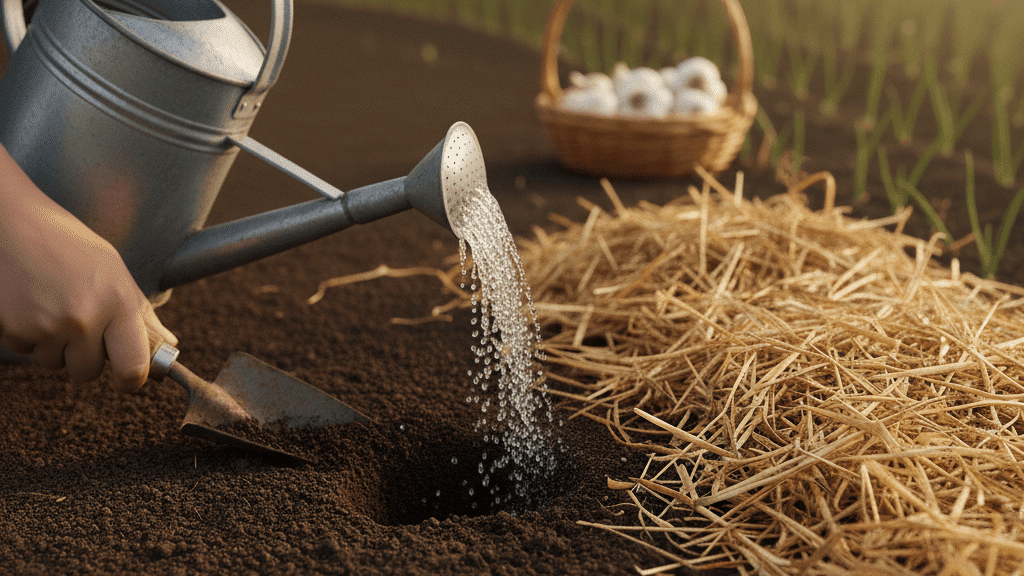
Water lightly right after planting to help settle the soil around the cloves, but don’t soak the area; just moisten it.
Add a protective layer of mulch using straw, shredded leaves, or compost, and apply 2 to 4 inches over the planted area, as mulch keeps the soil temperature steady and holds in moisture.
5. Handle Early Sprouts

Green shoots may appear before winter, and this is normal in some climates, so don’t worry if you see growth before the cold hits.
Leave the sprouts alone, and they’ll continue growing when spring arrives.
When is the Best Time to Plant Garlic?

Timing matters just as much as depth, so get both right and your garlic will thrive.
• Fall planting is the preferred choice: Planting in fall gives garlic time to establish strong roots before winter, and the cold period that follows helps bulbs develop separate cloves.
• Spring planting is possible but less ideal: You can plant in early spring if you missed the fall window, but expect smaller bulbs since plants miss the cold period they need.
• Regional timing tips make a difference: In cold climates, plant 4 to 6 weeks before the ground freezes solid, while in mild climates, plant in late fall or early winter.
Factors That Affect Planting Depth
The basic guideline works for most situations, but a few key factors might push you to adjust slightly.
These caveats can influence your outcome heftily and help a hearty harvest.
| Factor | Adjustment Needed | Why? |
|---|---|---|
| Sandy soil | Plant deeper (closer to 3 inches) | Drains quickly and doesn’t hold moisture well. |
| Clay soil | Plant shallower (around 2 inches) | Holds water and stays compact, preventing waterlogging. |
| Cold climate | Plant deeper (3 to 4 inches) | Extra soil protects cloves from harsh freezing. |
| Mild climate | Plant shallower (2 inches) | Less frost risk means less protection needed. |
| Using mulch (2 to 4 inches) | Flexible on depth | Mulch acts as insulation and does protective work. |
Garden Experiments About Garlic Depth
A grower carried out a nine-month test by planting garlic at three depths: 0, 4, and 7 inches.
-
Four Inches Produced the Best Results: The 4-inch depth yielded the heaviest bulbs at 68 grams, offering ideal soil cover and steady, balanced growth conditions overall.
-
Depth Was the Deciding Factor: Equal sunlight, nutrients, and watering showed that planting depth alone determined differences in garlic bulb size, strength, and survival rate.
-
Extreme Depths Reduced Success: Shallow cloves faced exposure, while deep ones struggled through winter, proving moderate planting depth provides more consistent results and survival.
-
Moderate Depth Supported Root Strength: Cloves at 4 inches developed stronger roots, healthier bulbs, and steadier growth, improving performance under varying temperature and soil conditions.
-
Practical Takeaway: For dependable yields, plant garlic 3 to 4 inches deep, ensuring balanced insulation, moisture, root strength, and consistent bulb formation.
Video Walkthrough
I’d like to acknowledge Gardening Experiments with Mind & Soil for the insightful video, which was a key reference in putting the aforementioned insights together.
Caring for Garlic After Planting
Your work isn’t done once the cloves are in the ground, but the care needed is minimal and straightforward.
1. Remove scapes from hardneck garlic in late spring: Hardneck varieties send up a curly flower stalk that should be cut off, as this redirects energy back into bulb development for a larger harvest.
2. Apply a light nitrogen fertilizer in early spring: When green shoots emerge strongly in spring, a light feeding helps fuel the rapid growth phase before bulb formation begins.
3. Stop watering 2 to 3 weeks before harvest: Cut off water once leaves start yellowing to allow bulbs to cure slightly in the ground, which improves storage quality and prevents rot.
4. Watch for yellowing lower leaves as a harvest indicator: When the bottom 3 to 4 leaves turn brown but top leaves stay green, it’s time to harvest for optimal bulb maturity.
Proper care throughout the growing season builds strong roots, and when spring arrives, your garlic will be ready to exhibit vigorous growth.
That strong foundation leads to bigger, healthier bulbs at harvest time.
Conclusion
Now you know how deep to plant garlic when burying your cloves, and tweak that depth based on whether you have sandy or clay soil, cold or mild winters.
Good timing and prep work pay off, as fall is your best friend for planting, compost feeds your bulbs, and loose soil gives roots room to spread.
Getting the depth right, giving them space, and not forgetting that mulch layer.
These small choices at planting time make all the difference when you’re pulling bulbs from the ground months later.
Ready to grow your best garlic yet?
Drop a comment below and tell us about your garlic growing experience or any questions you have!
Frequently Asked Questions
Are Eggshells Good for Garlic Plants?
Eggshells add calcium to soil, but garlic mainly needs nitrogen, not calcium, and eggshells decompose too slowly to provide much benefit during the growing season.
What Is the Best Month to Plant Garlic?
October is the best month for most regions, with late September ideal for cold areas and November through December suitable for warmer southern climates.
What Should You Not Plant Near Garlic?
Avoid planting beans, peas, asparagus, parsley, and sage near garlic, as it stunts their growth, and keep other alliums away to prevent pest problems.




